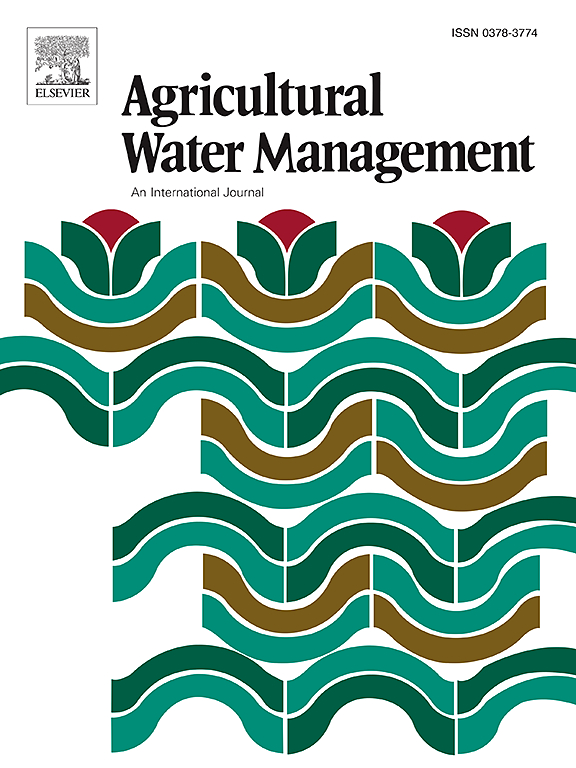Main influence indicators and regulatory pathways of emitter clogging under physical and chemical combination factors
IF 5.9
1区 农林科学
Q1 AGRONOMY
引用次数: 0
Abstract
Ions, inorganic particles, and contaminants present in irrigation water under fertigation conditions are sources of substances that cause clogging of drip irrigation emitters. To comprehensively measure the degree and development of sensor blockage as a function of water quality and sensor size, and to further clarify the sensitivity of blockage to physical and chemical factors, the blockage performance of each sensor under drip irrigation was tested through drip irrigation tests with common fertilizers (UNF, SOP, MOP, MAP, DAP) and sediment irrigation, and three indices were used to evaluate the performance of blockage under drip irrigation: emitter life based on relative average flow rate, final relative average flow rate, and dry mass of emitter clogging material. The degree of clogging of emitters was evaluated using three indicators: relative average flow rate, final relative average flow rate, and dry mass of clogged material of emitters to comprehensively evaluate the degree of clogging of emitters and to measure the influence of different factors on the development of clogging. The results showed that the clogging of the emitters was mainly caused by two factors, namely the size of the emitters and the water quality. All three emitter clogging indicators (fLq, fDra, fDM) were significantly correlated with sediment concentration at the 0.001 level. As sediment concentration (SC) increased, the degree of emitter clogging increased, and the negative effect of sediment gradation (SG) on the emitters became more significant. Fertilizer concentration, although affecting the clogging life of the emitters, was not significant for fDra and fDM, i.e. the accumulation of clogging material was mainly affected by sediment. While the size and shape of the flow path affects the risk of clogging to a greater degree, water quality affects the scaling or clogging inside the emitter, which can alter the flow characteristics of the emitter.
求助全文
约1分钟内获得全文
求助全文
来源期刊

Agricultural Water Management
农林科学-农艺学
CiteScore
12.10
自引率
14.90%
发文量
648
审稿时长
4.9 months
期刊介绍:
Agricultural Water Management publishes papers of international significance relating to the science, economics, and policy of agricultural water management. In all cases, manuscripts must address implications and provide insight regarding agricultural water management.
 求助内容:
求助内容: 应助结果提醒方式:
应助结果提醒方式:


